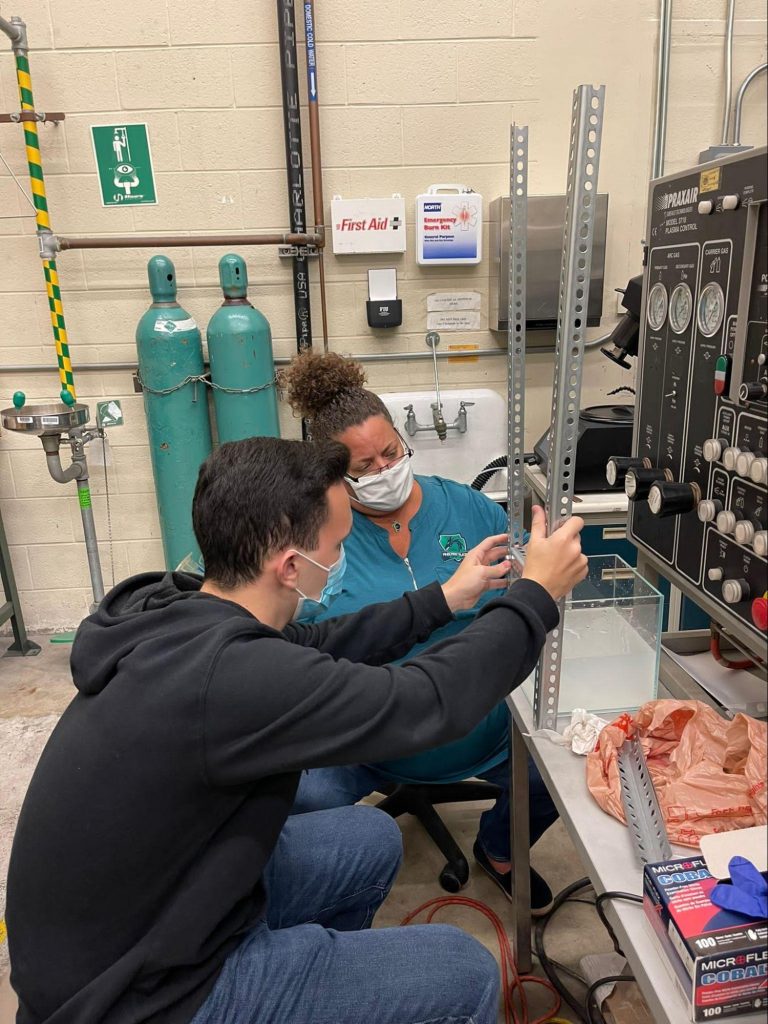[et_pb_section fb_built=”1″ admin_label=”section” _builder_version=”3.22″ custom_padding=”|961px||||” global_colors_info=”{}”][et_pb_row admin_label=”row” _builder_version=”3.25″ background_size=”initial” background_position=”top_left” background_repeat=”repeat” custom_margin=”|auto|-14px|auto||” global_colors_info=”{}”][et_pb_column type=”4_4″ _builder_version=”3.25″ custom_padding=”|||” global_colors_info=”{}” custom_padding__hover=”|||”][et_pb_text _builder_version=”4.14.2″ background_color=”#e0e0e0″ background_size=”initial” background_position=”top_left” background_repeat=”repeat” z_index_tablet=”500″ border_style_all=”none” border_width_top=”25″ border_width_right=”25″ border_width_bottom=”25″ border_width_left=”25″ global_colors_info=”{}”]
Project Title: Assessment of Ballistic Impacts on Graphene reinforced Polyethylene Composites
Participants:
- Mr. Rodney Pierre
- Ms. Liliana Ramos
- Mr. Adryel Gainza
- Mr. Lucas Beyra
- Mr. Sebastian Santana
Bulletproof body armor is an essential piece of equipment that protects soldiers, law enforcement, and anyone who feels threatened from bullet attacks. A proper bulletproof body armor should not only stop the bullet penetration but also absorb the blunt force upon impact. The observation for bullet penetration is rather straightforward, but the blunt force impact is hard to evaluate. In this six-week research experience program, 3 high school students and 2 K-12 teachers developed a new type of graphene-polyethylene composites through a facile cast and rolling route as well as design and build a blunt force impact testing apparatus with the aid of high-speed camera. This program involved extensive literature search and reading, hands-on experience and scientific problem discussion.

Project Title: Biodegradability of Cactus Leather
Participant: Mr. Abiel Almonte
During the summer of 2021, we mentored one high school student (Abiel Almonte), on a Biodegradability of Cactus Leather research project. Since the rising popularity of environmentally friendly alternatives, researchers have found different ways to replace commonly used items that present a threat to nature with products that do not cause harm to the environment. Cactus leather was made with that intention in mind. The goal of this project was to test and compare the biodegradability and mechanical properties of cactus leather and traditional leather through standardized simulation tests. In addition, a comparison between cactus leather and additional environmentally friendly alternatives, such as mushroom leather, was performed.
This project involved extensive literature research, hands-on experience, and scientific problem discussions.

NSF CELL-MET: Research Experiences for Teachers, High School, and Undergraduate Students
Project Title: Micro- and Meso- Mechanics of Agarose Hydrogels – Measuring using Tensile Testing and Indentation
Participants:
- Ms. Jamie Sanders
- Ms. Farnoush Shafiei
- Ms. Chantall Torres
During summer of 2021, we mentored one high school student (Chantall Torres), one high school teacher (Jamie Sanders), and one undergraduate (Farnoush Shafiei) in our lab for NSF, REHS, RET, and REU programs. They worked on a project to measure multi-scale mechanics of agarose hydrogels with varied polymer concentrations. As known, with high similarity in structure and mechanical properties as native tissues, hydrogels have been widely applied in tissue engineering to restore, maintain, or improve injured or damaged tissues. Meanwhile, they are popular materials for regenerative medicines for organs/tissues with trauma or diseases. In this study, they learned agarose hydrogel preparation, sample preparation, equipment (tensile tester and indenter) operation, mechanical measurements, data handling/plot using Excel, and research report preparation and presentation (PowerPoint and poster design). This is excellent training program for high school teachers/students and undergraduates who are interested in soft matter, graduate school, pursuing a STEM career, and learning experiment design and research skills.
[/et_pb_text][et_pb_divider color=”#081e3f” divider_weight=”5px” _builder_version=”4.14.0″ _module_preset=”default” global_colors_info=”{}”][/et_pb_divider][et_pb_text _builder_version=”4.14.2″ _module_preset=”default” background_color=”#e0e0e0″ global_colors_info=”{}”]
 Summer 2020
Summer 2020
PRE-CCAP – Remote Research Experiences for Teachers and High School Students
During this 6-weeks Remote Summer Experience, Ms. Liliana Ramos, a Chemistry and Physics Teacher from Pinecrest Glades Academy, worked on developing the lecture material for the “Introduction to Engineering” course with the intent of teaching it as a part of dual enrollment program at her High School. She worked directly with Dr. Agarwal for this assignment.
PRE-CCAP Remote Research Experiences for High School Students
1. Ms. Sophia Braceras – Origami of Shape Memory Polymer (SMP)
2. Ms. Sridevi Pulugurtha – Kirigami of Shape Memory Polymer (SMP)
3. Mr. Edgar Collazo – Effect of Mars soil on erosion of spacecraft
4. Mr. Juan Flores – Effect of Lunar soil on erosion of spacecraft
[/et_pb_text][/et_pb_column][/et_pb_row][/et_pb_section]
